This page contains material, information and background on the Aum Golly book series. On thecontact page you can contact the author or publisher and request a review copy. We are also happy to give interviews for press, blogs and podcasts, for example.
This is what you’ll find on this page:
- Description of the books
- Photos: cover photos and author photos
- Author introduction: Jukka Aalho, GPT-3 and ChatGPT
- About the publisher
- Frequently asked questions

This is how Aum Golly was first created. Jukka Aalho has written the bold prompts in the OpenAI user interface. GPT-3 produces poems in real-time.
Book introductions: Aum Golly
The Aum Golly series includes:
- Aum Golly – Poems on Humanity by an Artificial Intelligence(2021)
- Aum Golly 2 – Illustrated Poems on Humanity by Artificial Intelligence (2023)
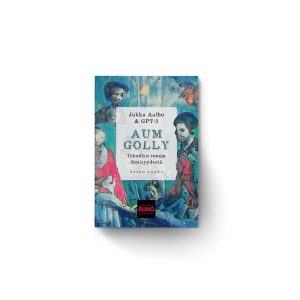
Aum Golly – Poems on Humanity by an Artificial Intelligence (published by Basam Books in Finnish and Kertojan ääni in English) is a book of poems about humanity written by AI in 24 hours. Both the name of the work and the themes of the work – happiness, love and meaning – were produced by AI.
- Book of poetry written by GPT-3 and Jukka Aalho
- Based on the GPT-3 language model released in 2020 by OpenAI in San Francisco
- Published in Finnish in the spring of 2021 as a paperback, e-book and audiobook
- 55 poems
- Written in 24 hours
- Translated from English to Finnish in the same 24 hours
- The cost to use the AI was $2.64.
- The ISBN of the printed book is 978-952-3791-52-7

Aum Golly 2 – Illustrated Poems on Humanity by Artificial Intelligence(Kertojan ääni) is a book of poems about humanity illustrated and written by AI in 12 hours.
- Book of poetry written by ChatGPT and Jukka Aalho
- Illustrated by Midjourney
- Based on the ChatGPT language model from OpenAI in San Francisco, released in 2022
- Published in Finnish and English in January 2023 in paperback and as an e-book
- 29 poems
- 23 illustrations
- Written in 12 hours
- Translated from English to Finnish in the same 12 hours
- The cost to use the AI was $51.46.
- The ISBN of the printed book is 978-952-7397-35-0 (in Finnish)
Photos: Aum Golly cover photo and author photos
Cover photos and author’s photos can be freely used in all stories and articles related to the book. In author’s photos, the name of the photographer must be mentioned, for example “Photo: name of the photographer”.
- Aum Golly cover photo: PNG, 1.5 MB (827×1179 px)
- Aum Golly cover photo (JPG, 400 kb (800×1139 px)
- Aum Golly 2 cover, Finnish ( JPG, 570 kt, 1500x1500px)
- Aum Golly 2 cover, English (JPG, 570 kt, 1500x1500px)
Photos of Jukka Aalho. Photographer mentioned in the file name.
- Jukka Aalho (high resolution, JPG, 11 MB). Photographer Essi Aalho.
- Jukka Aalho (medium quality, JPG, 1,8 MB). Photographer Essi Aalho
- Jukka Aalho (low resolution, JPG, 300 kb). Photographer Essi Aalho
The photos are also collected in this public Google Drive folder. Below you can see previews of the available images.
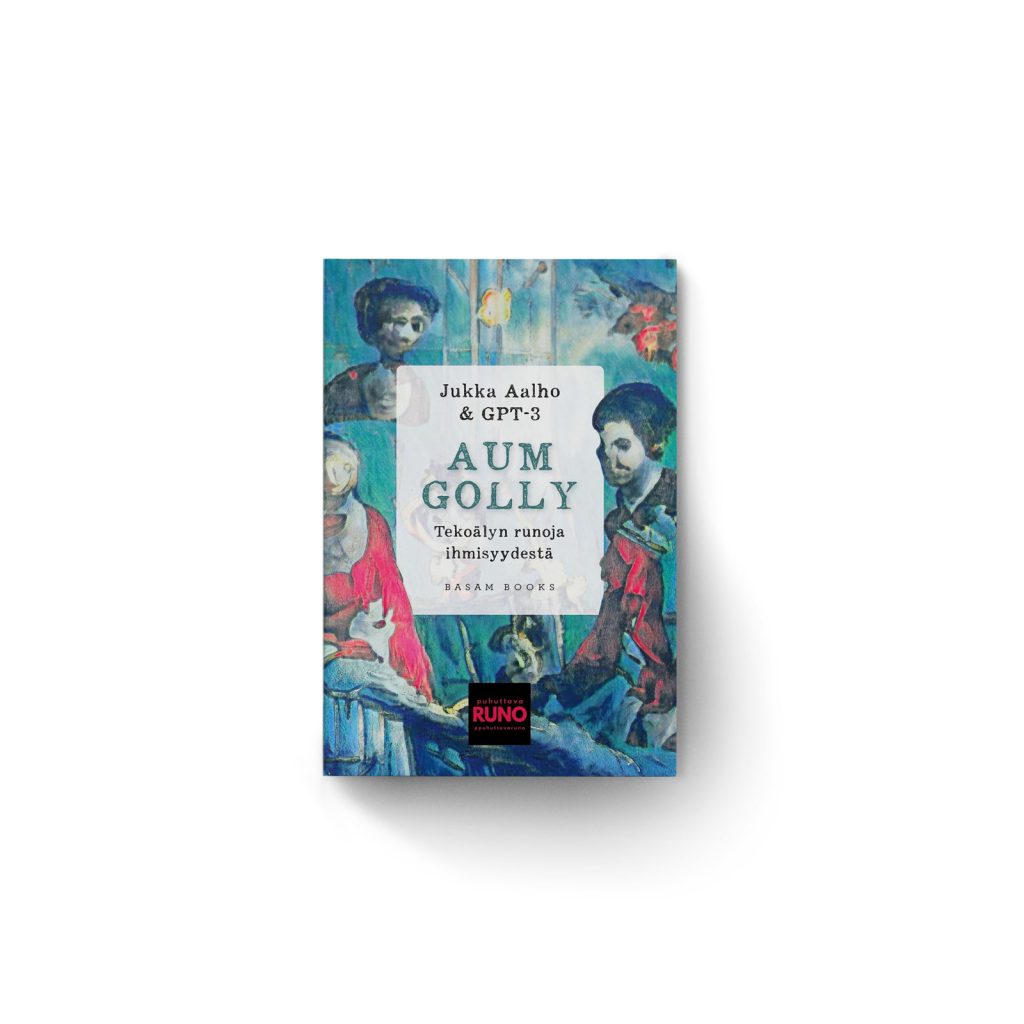
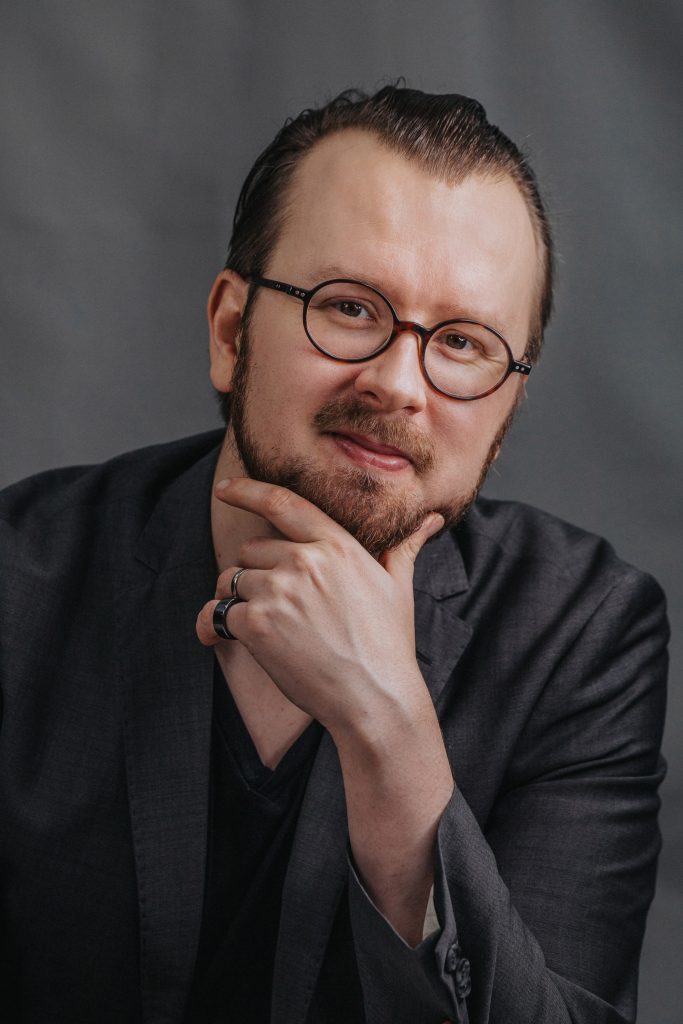
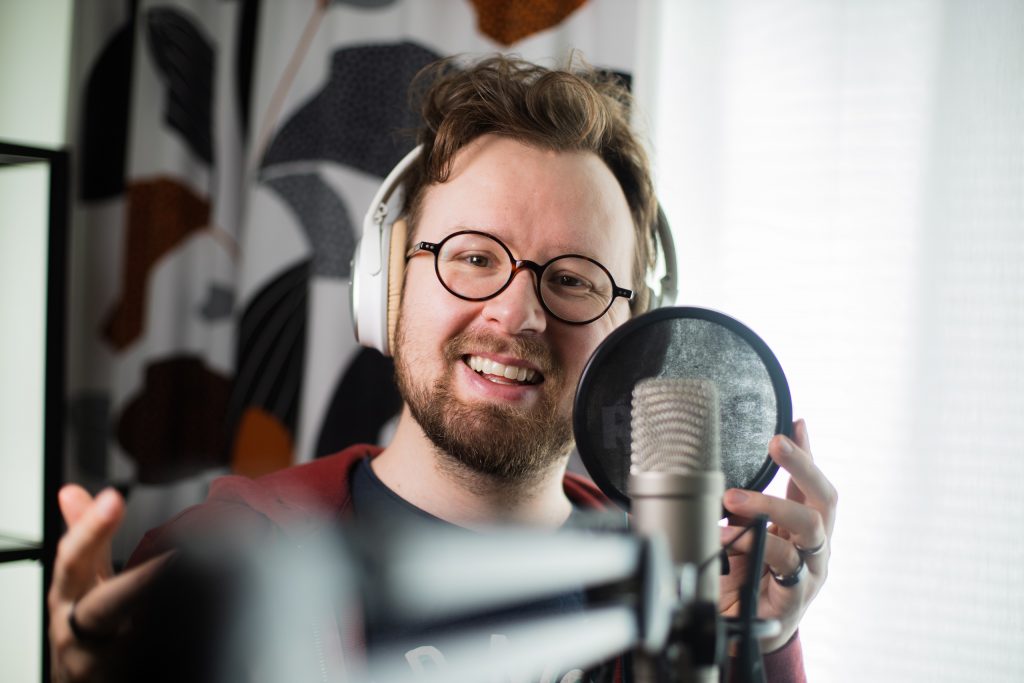
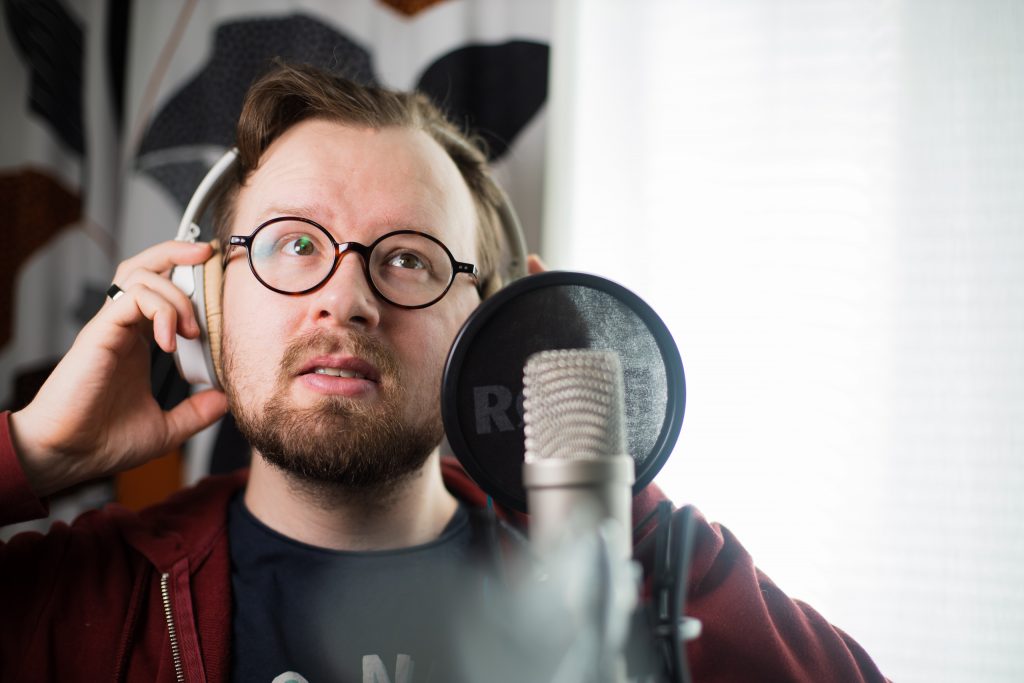
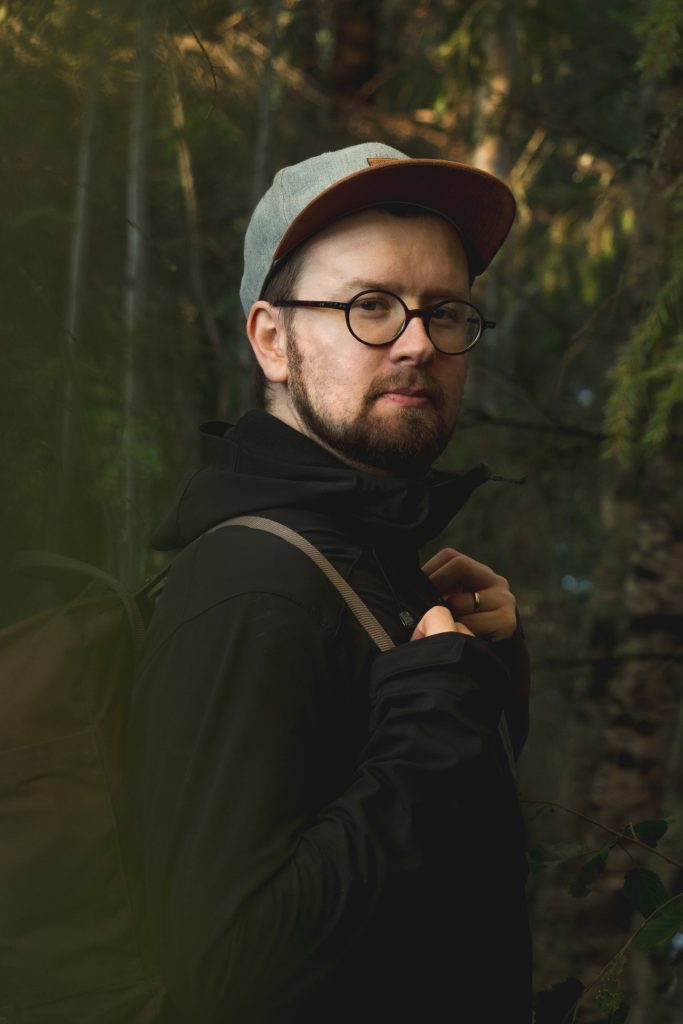
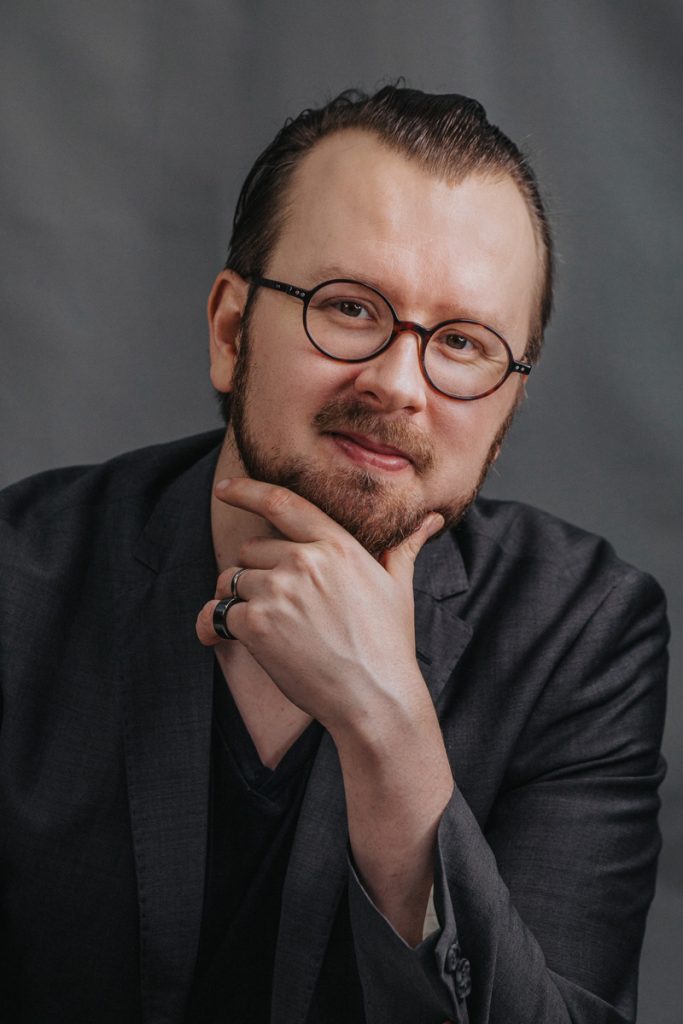
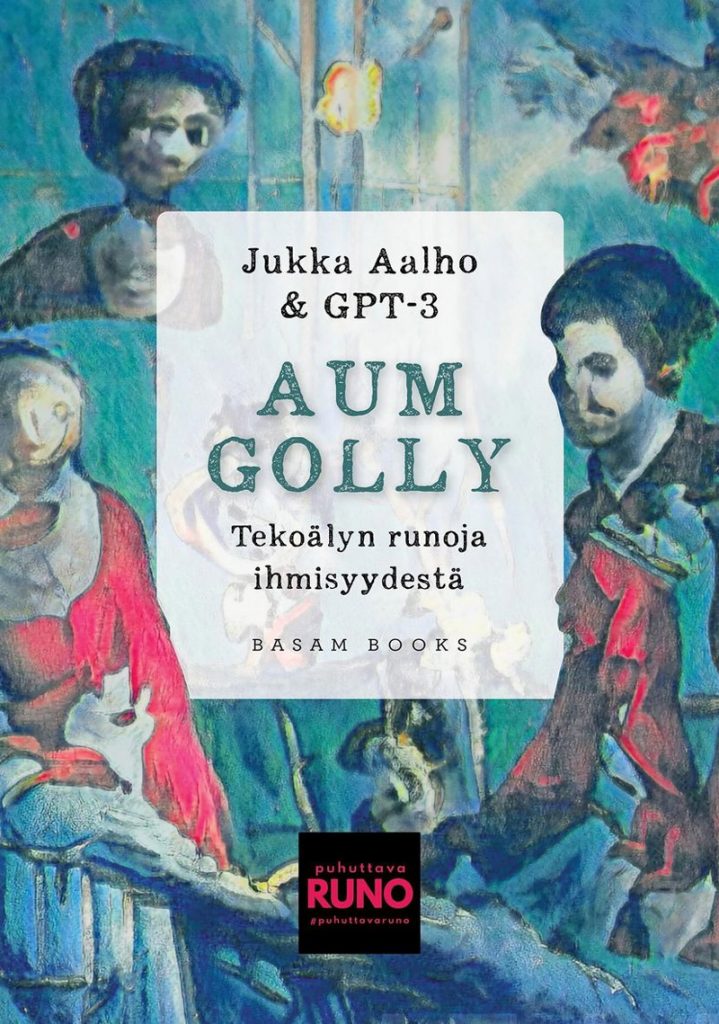
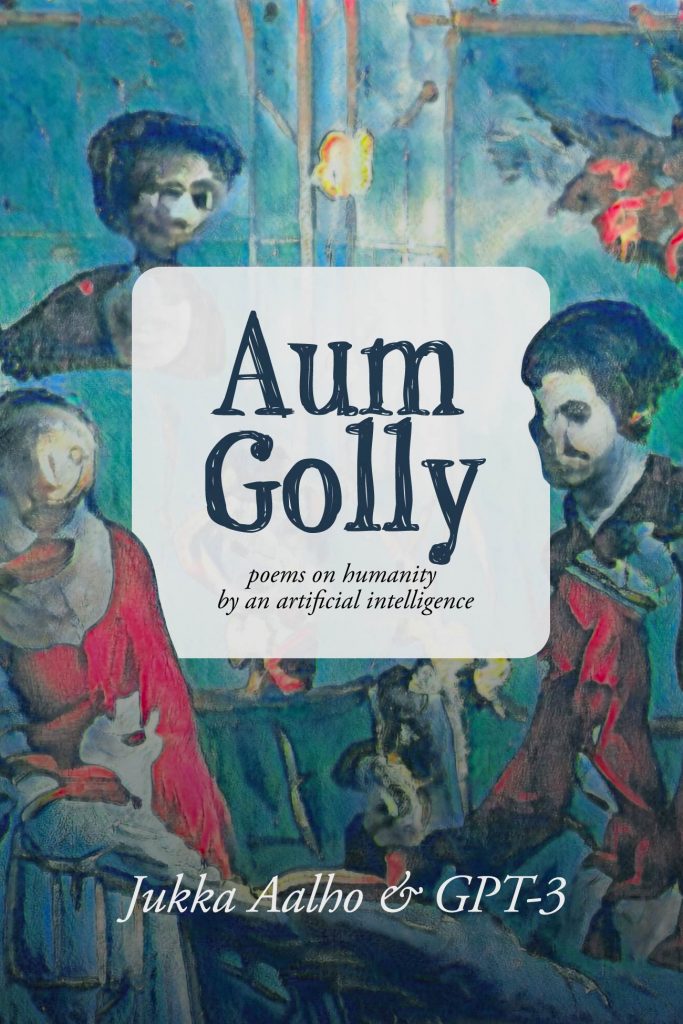

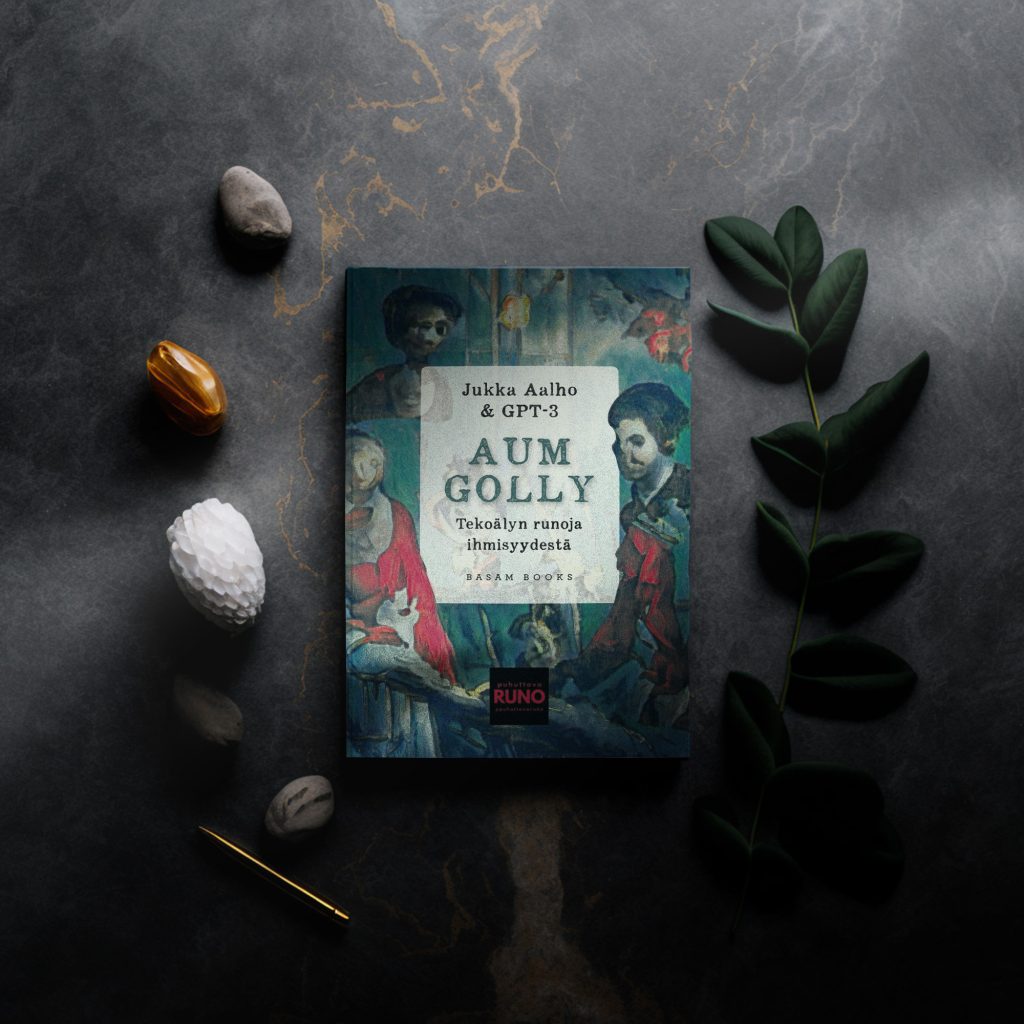
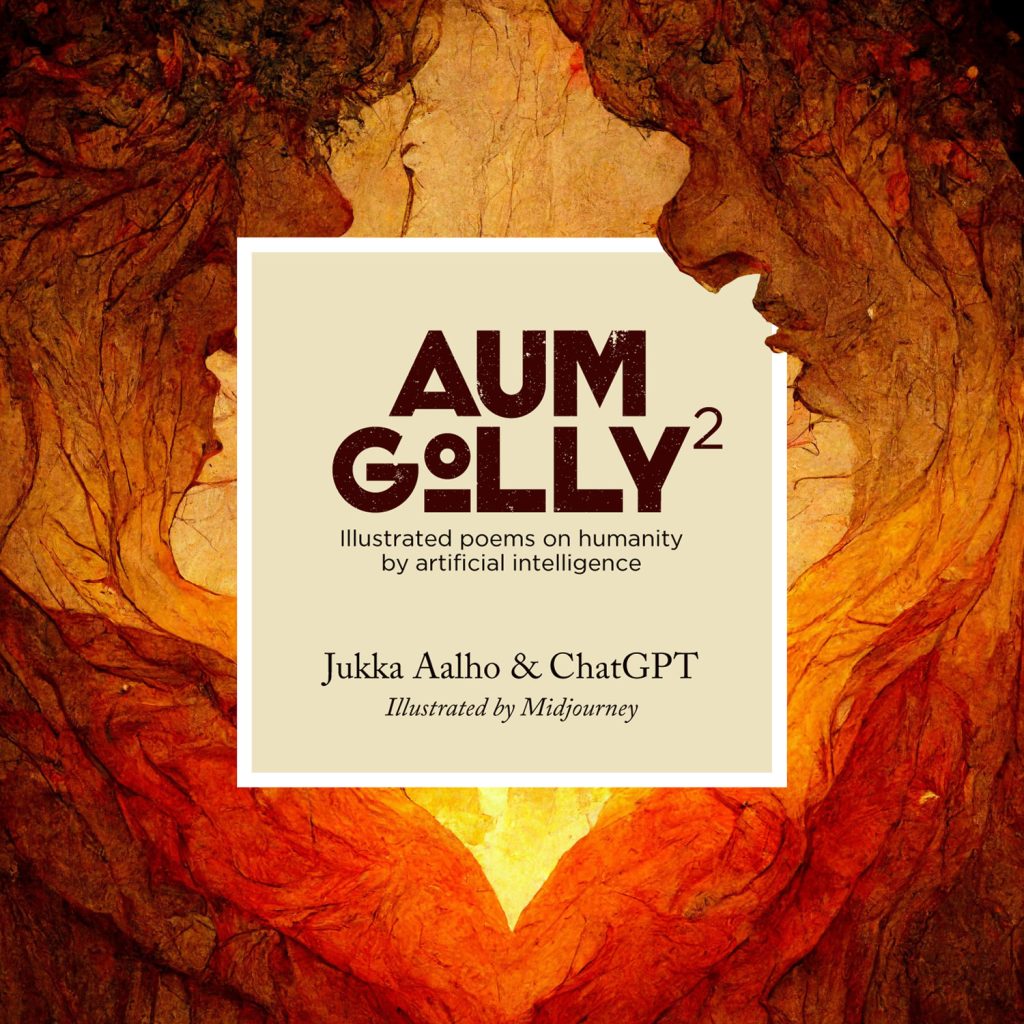

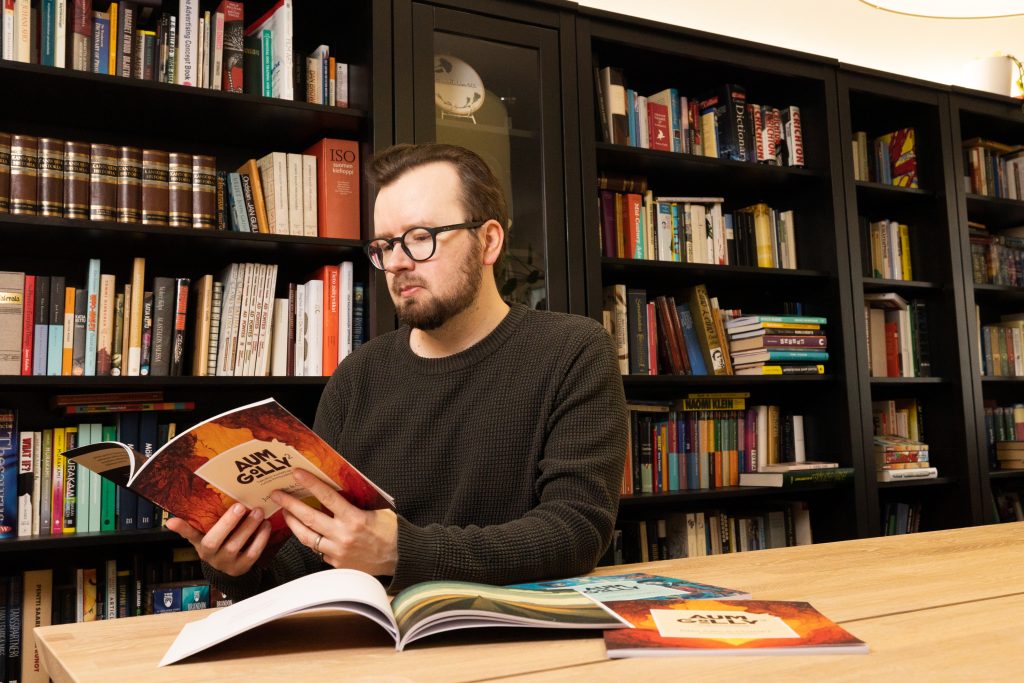

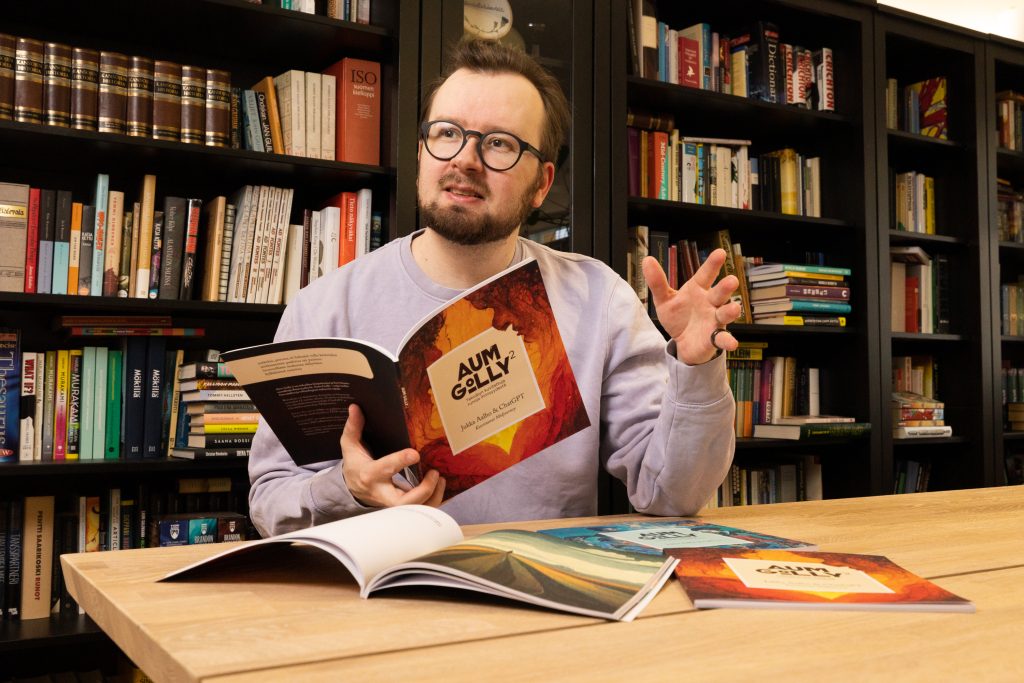
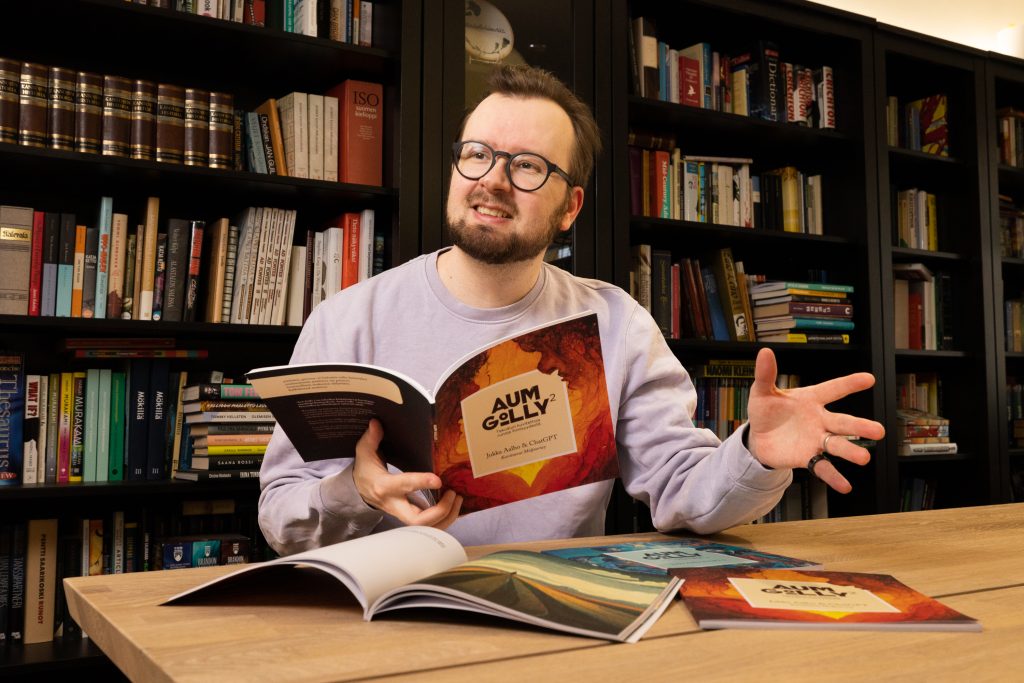


Author introduction: Jukka Aalho
Jukka Aalho (b. 1986) is an award-winning writer from Oulu. He has won e.g. the Martti Joenpolvi short story competition and J. H. Erkko writing competition twice. Aum Golly is his first collection of poems.
- Host of the Kertojan ääni literary podcast
- Currently working in marketing and science communications at Aalho Media. Previous experience as the Science Communication Lead at Oura Health, known for its smart rings.
- Delivered a TEDx talk in 2020 on hacking creativity with data
- Lives and works in Oulu, Finland
- Master of Arts (2012), majoring in English philology. Subsidiary subjects include Finnish language, marketing, Latin and ancient Greek.
- Short stories translated into German and published in Finnish as e-books and audio novellas.

Author introduction: GPT-3
GPT-3 is a highly advanced autoregressive language model released in 2020 by OpenAI in San Francisco.
Through deep learning, GPT-3 can produce sentences, poems and stories that are indistinguishable from human writing, based on user input. GPT-3 can also generate code (e.g. JavaScript), summarize given text or make legal text understandable.
- GPT-3 is like predictive text on steroids.
- The language model has 175 billion variables and has been taught using internet text corpora, such as the English Wikipedia (see published study for more information).
- GPT-3 is available for use on openai.com.
- In September 2020, GPT-3 was licensed to Microsoft for their services and products
- The published study also quickly tested whether GPT-3 could produce unique poems when given the name of the poet and the title of the poem. (p. 45). This method is very similar to that of Aum Golly.
According to its website, OpenAI’s mission is to ensure that general-purpose intelligence – self-directed systems that do most of the economically useful work better than humans – helps all of humanity.
About the publishers
Since its inception, the Aum Golly series has had two publishers: Basam Books and Kertojan ääni.
Aum Golly is published in print by Basam Books, based in Helsinki. The audiobook and e-book are published by Kertojan ääni.
Aum Golly 2 is published in print and e-formats by Kertojan ääni, based in Oulu.
Basam Books
Basam Books is an independent Helsinki-based general publisher. They are particularly known as a publisher of wellbeing and non-fiction literature, fiction classics and poetry.
Basam Books
Lapinlahdenpolku 8, c/o Lapinlahden Lähde Oy
00180 HELSINKI
+358 40 841 7913
https://basambooks.fi
Kertojan ääni
Kertojan ääni is Jukka and Essi Aalho’s indie publishing house, podcast and literary website. Kertojan ääni is part of Aalho Media.
Kertojan ääni
me@kertojanaani.fi
+358 50 590 7703
https://kertojanaani.fi
Questions and answers
Co-author Jukka Aalho answers questions big and small.
GPT-3 is an autoregressive language model to released in 2020 by OpenAI in San Francisco. Through deep learning, it is able to produce sentences, poems and stories based on user input, indistinguishable from human writing.
The autoregressive language model in this case means that GPT-3 generates more text based on the previous text. So it’s like a very advanced predictive text input. In the course of teaching the model, it has been fed with different types of data, covering hundreds of billions of words.
GPT-3 is not specifically designed for writing poems, but it’s a general purpose model also capable of generating code, such as JavaScript. This versatility distinguishes, for example, this book of poems from other books of poetry produced by machine.
Aum Golly – Poems on Humanity by Artificial Intelligence
– April 15, 2021 in Finnish
– October 9,2021 in English
Aum Golly 2 – Illustrated Poems on Humanity by Artificial Intelligence
– January 18, 2023 in Finnish and English
The language models used in the book series (GPT-3 and ChatGPT) have written the poems based on the bold prompts. They have not been edited except for punctuation and line changes. In addition, in Aum Golly 2, ChatGPT’s answers have sometimes been shortened.
Poems have been produced by computer for decades. There have also been several ambitious, experimental poetry projects in Finland and around the globe.
The text produced by the large language models differs from the previous machine language in the same way that a toaster differs from an iPad. This does not necessarily mean that Aum Golly’s poems are any better than previous human or machine-generated poetry.
The Aum Golly book series is first and foremost an example of a creative future – its threats and opportunities. Aum Golly’s poems and illustrations are examples of the artistic versatility of generative AI. By reading the series of books, you can see and experience the progress that has been made over the last few years.
What seemed incredible in 2021 is clumsy a few years later compared to the next instalment in the Aum Golly series of poems.
Aum Golly is a history frozen in time, a reminder of the speed and possibilities of progress.
Both the title of the first book and the themes of the book – happiness, love and meaning – were suggested by the AI. The themes of the books were born out of this input and response:
The three most important themes for us modern people are:
- The need to be happy.
- The need to be loved.
- The need to make a difference.
The second Aum Golly is called “Aum Golly 2” and the themes were also created using AI.
If you had to give a concise list of three themes for a best-selling book of poetry, what would they be?
- The human experience and the emotions and feelings that connect us all.
- The beauty and power of nature, and our relationship with the natural world.
- The challenges and triumphs of love, and the ways in which it shapes our lives.
GPT-3 has proposed titles for the book. To our knowledge, Aum Golly means nothing. The title of the work was born from this input:
Creative book titles for a book of poems about love, happiness and meaning:
A very good idea
Aum Golly
A Bit of This, a Bit of That
The Book of Love
From these options, we chose the name Aum Golly. The name of the sequel was born like this:
If you had to come up with a title for the sequel of Aum Golly, what would it be? It’s a book of poetry by
an artificial intelligence. It would be great if the name was some variation of Aum Golly and worked in any language.
Aum Golly 2
Aum Golly Plus
Aum Golly More
Aum Golly Again
Aum Golly 2.0
Aum Golly: The Sequel
Aum Golly: The Next Chapter
Aum Golly: The Continued Journey
Aum Golly: The Next Evolution
Aum Golly: The Next Level
Different providers have different conditions. However, in general, for example, the copyright for the output of deep learning-based text or image producers is held by the human guiding the AI. The Aum Golly poems are copyrighted by Jukka Aalho.
As for the images, the terms of the AI generator Midjourney state that the AI operator owns the images produced, but Midjourney has broad rights to use both the text feeds and the final images.
GPT-3 produces text mainly in English. So the poems in Aum Golly are originally in English. Jukka Aalho has translated them into Finnish in the 24 hours it took to produce the work. Google Translate has been used for the raw translation.
ChatGPT also produces text in Finnish. Aum Golly 2 was originally made in English. Jukka Aalho has translated it into Finnish during the 12 hours it took to produce the work. The raw translation has been done using the DeepL translation software.
Jukka Aalho, MA, has studied English Philology and the Finnish language. He has also translated other texts in his career before Aum Golly.
GPT-3 and ChatGPT produce text based on the huge amount of data they have been trained with. They may sometimes use similar phrases and expressions to those in the data. The poems in the works have been checked and no direct correspondences have been found. The inputs to the AI are original texts by Jukka Aalho.
GPT-3 can produce text in many languages and translate between languages. The language model can also produce Finnish from Finnish input, but the quality and depth of the output is not yet at the same level as in English. This is presumably because the language model has been taught mainly in English.
ChatGPT, on the other hand, also produces text fluently in Finnish.
OpenAI charges for the use of the API based on the amount of text produced. It cost $2.64 to produce the texts needed for Aum Golly. For beta users, however, using the AI was free.
Midjourney, the illustration platform used in Aum Golly 2, is a monthly service. It cost $30 + $20 to keep the images private (Private mode), for a total of around $50 including VAT.
Can anyone use ChatGPT?
ChatGPT is still in public beta and you can try it for free at chat.openai.com
Yes, they do. Throughout the process, Jukka Aalho has kept OpenAI informed about the progress of the project. OpenAI’s guidelines have been that the work must show which parts are written by humans and which by AI. The AI operator is also ultimately responsible for the content of the work.
The whole Aum Golly project has used a variety of AI applications. The poems are done by GPT-3 and ChatGPT, the illustrations by Midjourney, the illustration of the first book and its hundred variations are generated by Artbreeder, the advertisements use different video generation tools like Deep Nostalgia by Myheritage…
Aum Golly is an example of how creative projects can be made in the future. There has been no need for individual artists, such as a cover artist or animator. People involved in the creation process have been paid.
For visual artists, the moral rights of artists are more contentious. Names of artists have not been used as part of the prompt for the illustrations.
